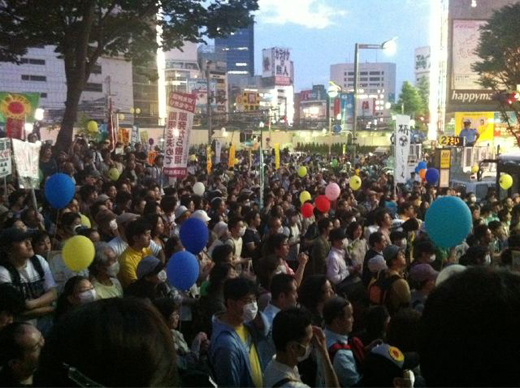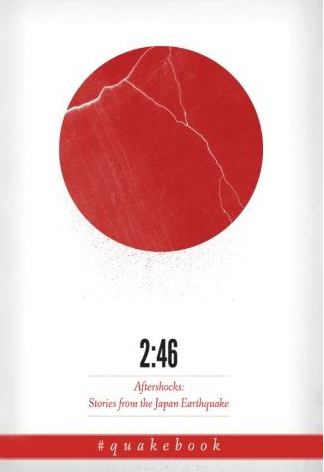On the three-month anniversary of the March 11 earthquake in Japan, protesters around the country took to the streets to protest nuclear power after the true scale of the nuclear disaster and details of gross mismanagement of the Fukushima Daiichi power plant by the Japanese government and TEPCO came to light. Rally organizers in Tokyo say about 20,000 people participated in the demonstration.
Hiroko Tabuchi reports from Tokyo:
Anger over the government’s handling of the accident at the Fukushima nuclear plant has erupted in recent weeks after revelations that the damage at the plant, and the release of radioactive material, was far worse than previously thought. Mothers worried for their children’s health, as well as farmers and fishermen angry about their damaged livelihoods, have been especially critical of the government of Prime Minister Naoto Kan.
The disaster has also prompted a national debate about Japan’s heavy reliance on nuclear power despite the country’s history of devastating earthquakes and a deep public distrust of the nuclear industry. In perhaps his sole move that has won popular support, Mr. Kan ordered the shutdown of a separate nuclear power plant in central Japan until it can bolster its tsunami defenses. But recent politicking in a gridlocked Parliament has added to the public’s disenchantment.
(…)
Supporters of the rally here in Tokyo, and in coordinated events in many other cities in Japan, say the demonstration was remarkable not because of its size, but because it happened at all in a country that so values conformity and order.
As protesters congregated in a Tokyo square after several marches through the city, there were some confrontations with the police. A police officer who refused to give his name explained breathlessly that protesters had not been given permission to congregate in the square.
“Disperse immediately!” police officers shouted through megaphones.
“Shut up and go away!” a young man screamed back.
About 9 p.m., however, police officers forcibly moved in to break up the crowd. There was some pushing and shoving, but no serious skirmishes.
Still, Mr. Matsumoto, the organizer, looked elated. “Who would have thought so many people would turn up?” he said. “I think that Japan is on the cusp of something new.”
The Japanese might have a reputation for order and polite rule-following, but the country does have a history of protests, particularly the student demonstrations of the 60’s and the violent attacks by students and farmers of Narita Airport in the 70’s. By contrast, the anti-nuke protests on June 11 were quite peaceful as a new generation of citizens discover a way to make their voices to be heard.
In related news, the print version of 2:46 Aftershocks: Stories From The Japan Earthquake (a.k.a Quakebook) is now available on Amazon. 100% of the proceeds will go to the Japan Red Cross Society. Amazon is paying the production costs for the first 3,000 copies sold in the U.S., so that means 100% of the purchase price goes to charity. (For anyone who reads Japanese, the bilingual print edition is now available on Amazon Japan.) Three months after the quake, 90,000 people are still living in shelters. The people of Tohoku could really use your help.


